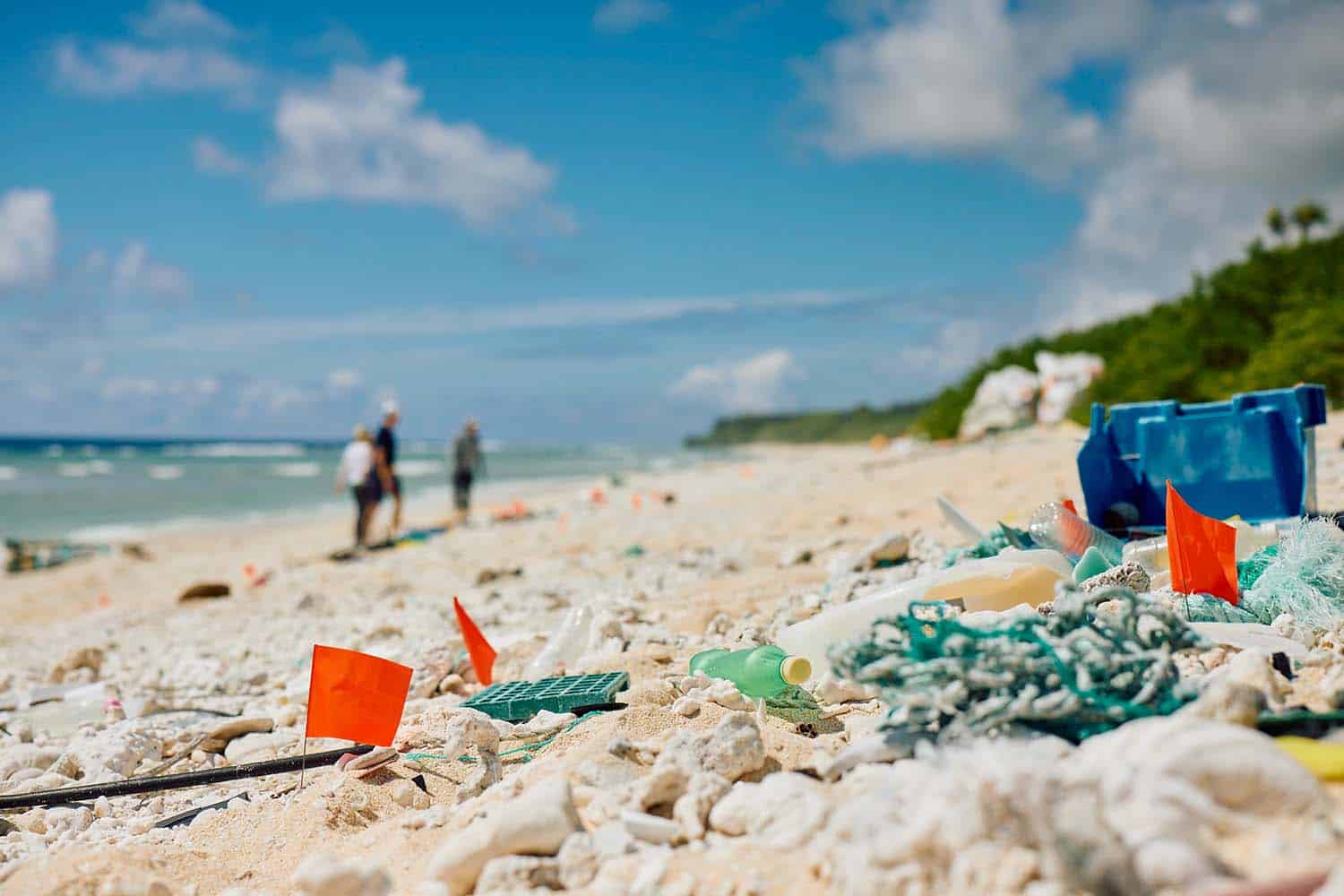
After months of preparation, the Plastic Odyssey team successfully removed more than 9 tons of plastic waste from the world’s most polluted island last February. This achievement was made possible through low-tech innovations, which the organization details in the film Plastic Odyssey: Mission Pacific.
The World’s Most Polluted Island
37 square kilometers. That’s the size of Henderson Island. A tiny speck, almost, in the heart of the Pacific Ocean. Yet, this UNESCO World Heritage site is also the most polluted sanctuary in the world, with what Plastic Odyssey describes as « the highest density of plastic debris ever recorded. » The situation of the island has not gone unnoticed by Plastic Odyssey, an organization dedicated to combating plastic pollution.
Founded by Simon Bernard, Alexandre Dechelotte, and Bob Vrignaud, the organization has been sailing the globe for two years aboard its laboratory ship. The goal is to stop in the thirty coastal cities most affected by plastic pollution to meet local stakeholders and develop a global network of solutions against plastic pollution.
“At first, we didn’t plan to stop at Henderson Island, because our objective is not to collect waste, but to address the source of the problem,” says Simon Bernard, president and co-founder of Plastic Odyssey, in an interview with La Relève et La Peste. “But when we heard about this island, we knew we had to take action.

Given that Henderson Island is a deserted island, it’s impossible to carry out our usual actions, such as setting up plastic recycling factories or launching educational programs. But we had to try to remove as much waste as possible, because these plastic wastes disintegrate and have a severe impact on biodiversity. »
He added: « In places where no one can go and where waste accumulates, we must act quickly and with innovation.

Low-tech and innovative technologies
In the heart of the Pacific, several expeditions attempted to clean Henderson Island, but all failed. In 2019, while six tons of waste were successfully collected, they could not be removed from the island due to the coral reef barrier surrounding the site.
« The major challenge is really to successfully remove the waste while crossing the coral reef without damaging it, » explains Simon Bernard to La Relève et La Peste. « So, we racked our brains to find innovative techniques. »
After much brainstorming, the Plastic Odyssey team eventually decided to use « low-tech » technologies. Among these was a parachute, which allowed them to bypass the coral reef by air.

When we came up with this somewhat crazy idea, we had no model, and no one believed in it, » recalls Simon Bernard with a laughing voice. « The scientists didn’t believe in it, and neither did the parachute manufacturers. »
And yet, in just ten days, the team succeeded in removing 6 tons of waste from the water by attaching several plastic waste bags to a parachute. This parachute was then towed from the expedition’s boat using a winch made from an old motorcycle found in Ecuador. This low-tech invention turned out to be a true ally

It’s sometimes when we have limited resources that we come up with the most innovative results, » smiles Simon Bernard, whose love for low-tech solutions comes from a deep-rooted place. A former merchant navy officer, he embarked about ten years ago alongside Corentin De Chatelperron aboard the Nomade des mers, an expedition that traveled the globe in search of sustainable innovations.
Source : la releve et la peste


